Bay View's own Weissbier Microbrewery

In the 1890s, Bay View’s Munzinger Brewery may have been small potatoes in the world of beer greats such as Miller, Pabst, Schlitz, and Blatz. But Munzinger Brewery succeeded in carving out a niche in the brewing industry, producing a German specialty beer called weissbier.
Christian H. Munzinger, Jr. was born Dec. 27, 1856, and grew up on a farm in Oak Creek Township (on the site of the former AC Delco) with his 11 siblings. His father, Christian, Sr., a farmer in Bavaria, Germany, immigrated to America in 1847 at the age of 31.
In 1885 Christian Jr. purchased property for his brewery at present-day 2428-32 S. Burrell Street from Bay View residents Christian and Annie Otjen and Christian and Anna Bech, for $800. Munzinger opened his brewery on that site in 1890, and also lived at this location. His first products were soda water and ginger ale.
In 1892 Richard Koethe joined Munzinger’s business and the company began using bottles lettered Munzinger & Koethe. The company produced weissbier made of wheat and barley. The English translation for “weiss” is “white”, hence weissbier being also called “white beer.” The Great American Beer Book describes weissbier as an effervescent, light-colored beer with a sharp yeasty or “bready” aroma.
A second stage of fermentation took place after the beer was bottled, so the bottles and tops had to be extra strong. Weissbier was so charged with carbonation that when the bottle was opened, the cork would pop out just like a champagne bottle.
The brew came in pint-sized, deep amber colored bottles, which prevented light from spoiling the beer. The bottles had a center embossing (raised lettering) that identified the brew as coming from Munzinger’s brewery. The Cream City Glass Company in Milwaukee produced the bottles.
Koethe remained in the business with Munzinger for only one year. Then in May 1895, Munzinger sold half interest in the business to George Fred Gerlinger for $1,000. The name Koethe was ground off the bottles, and the bottles were then lettered MUNZINGER & GERLINGER. Bottles during that period were deep amber, deep olive amber, and aqua colored.
In 1895 Munzinger & Gerlinger produced weissbier, soda, mineral waters, cider, ginger ale, and Wisconsin birch beer. It is not known exactly how many barrels the company produced each year, but the Register of U.S. Breweries of 1876-1976, states that the company produced somewhere between 1 and 500 barrels per year. In December 1896, Gerlinger sold back his half share of the company to Munzinger for the original amount of $1,000.
 By 1900 Munzinger’s company was know as C. H. Munzinger, and employed five people. According to Ron Winkler, in a September 2007 Bay View Historian article, the brewery used spring water that flowed under the property. Bottles used by Munzinger during this period are marked WF&S, an acronym for the William Franzen & Son glass company in Milwaukee.
By 1900 Munzinger’s company was know as C. H. Munzinger, and employed five people. According to Ron Winkler, in a September 2007 Bay View Historian article, the brewery used spring water that flowed under the property. Bottles used by Munzinger during this period are marked WF&S, an acronym for the William Franzen & Son glass company in Milwaukee.
In October 1892, Munzinger took out a $3,000 mortgage, held by Olive H. Lewis, with terms of five years for repayment at 6% interest. Munzinger defaulted on this mortgage and Lewis sued Munzinger in Wisconsin Superior Court in December 1899. Lewis won a judgment of $3,225 for principal and interest. A sheriff’s sale took place on September 23, 1901, at which time the brewery was sold for $2,700, with Munzinger responsible for the paying the shortfall. According to Munzinger’s nephew, John Munzinger, the Graf Beverages Company bought out the Munzinger Brewery inventory. The old brewery building on Burrell Street was torn down in 1905, and two buildings are now at that site, a duplex built in 1906 and a single-family home in 1926.
City directories show that Munzinger worked as a carpenter and a concrete worker from 1906 to 1910 and during that time was living at various locations on Burrell, Austin, and Smith streets. Munzinger died Sept 9, 1915, at the age of 59. He never married. His nephew John Munzinger and niece Kitty Munzinger Dinauer both reside in the area.
Weissbier
Weissbier is a type of a malt liquor made of wheat, barley, and malt. It was first produced in England and became popular in Germany in the 16th Century. In the first half of the 19th century many U.S. breweries produced it, but output was small and most was bottled beer. Today a number of American microbreweries produce weissbier, with local Sprecher Brewery producing Hefe Weiss. According to Mike Roman, owner of Bay View's Romans' Pub, unlike their German counterparts, American brewers add lemon to their weissbier.
Bottle Making in Chase Valley
In 1880 Enoch Chase opened the Chase Valley Glass on Lincoln Avenue, near the Kinnickinnic River and made bottles for Milwaukee’s breweries. A year later Chase sold the company, and it became the Wisconsin Glass Company, which also produced drug bottles and window glass. Over the years the company changed hands, becoming Cream City Glass Company from 1886 to 1892, the Northern Glass Company from 1892 to 1893, and the William Franzen & Sons Company from 1893 to 1920.
©2011 Bay View Compass. Reprinted courtesy of Bay View Compass (bayviewcompass.com)








